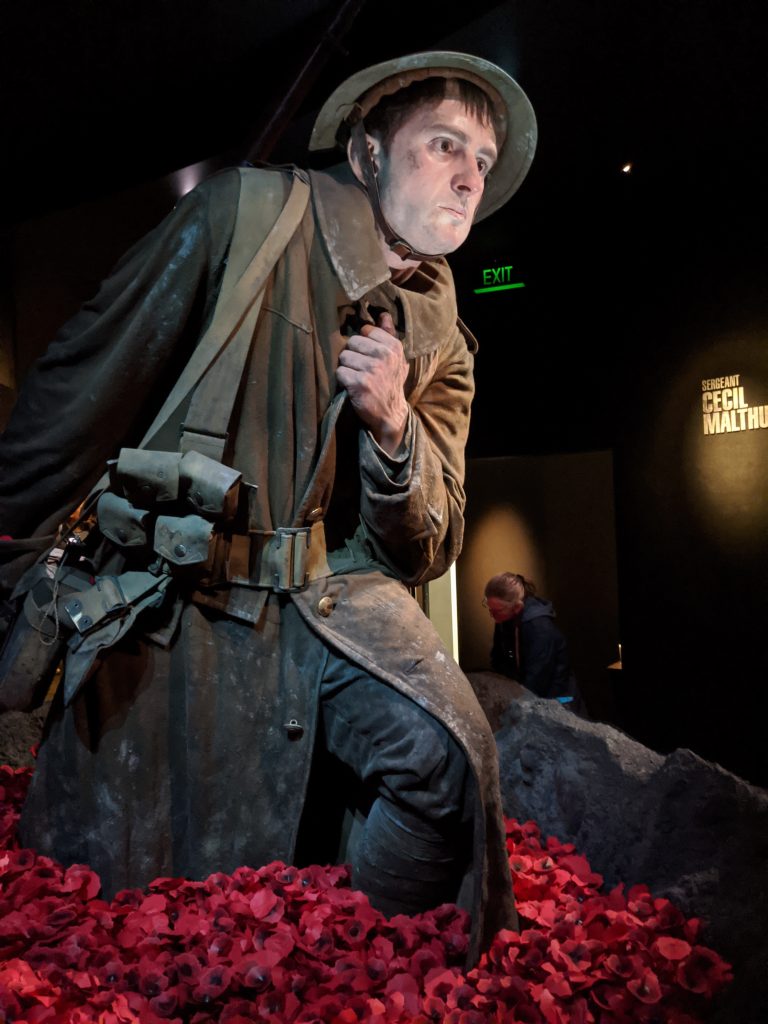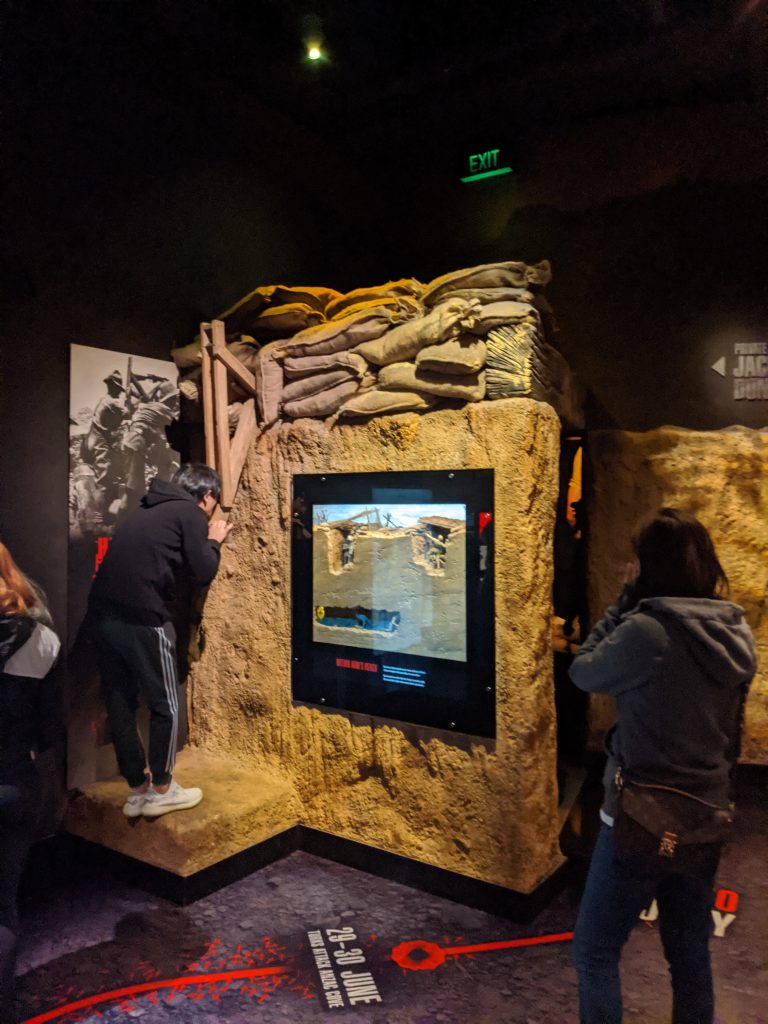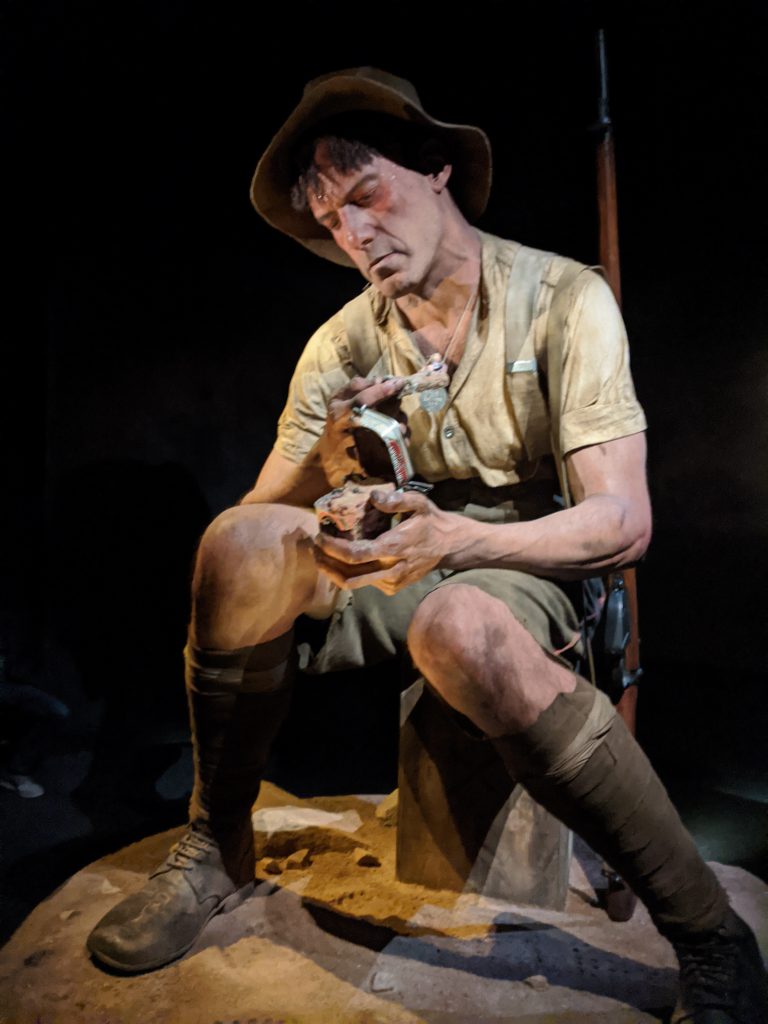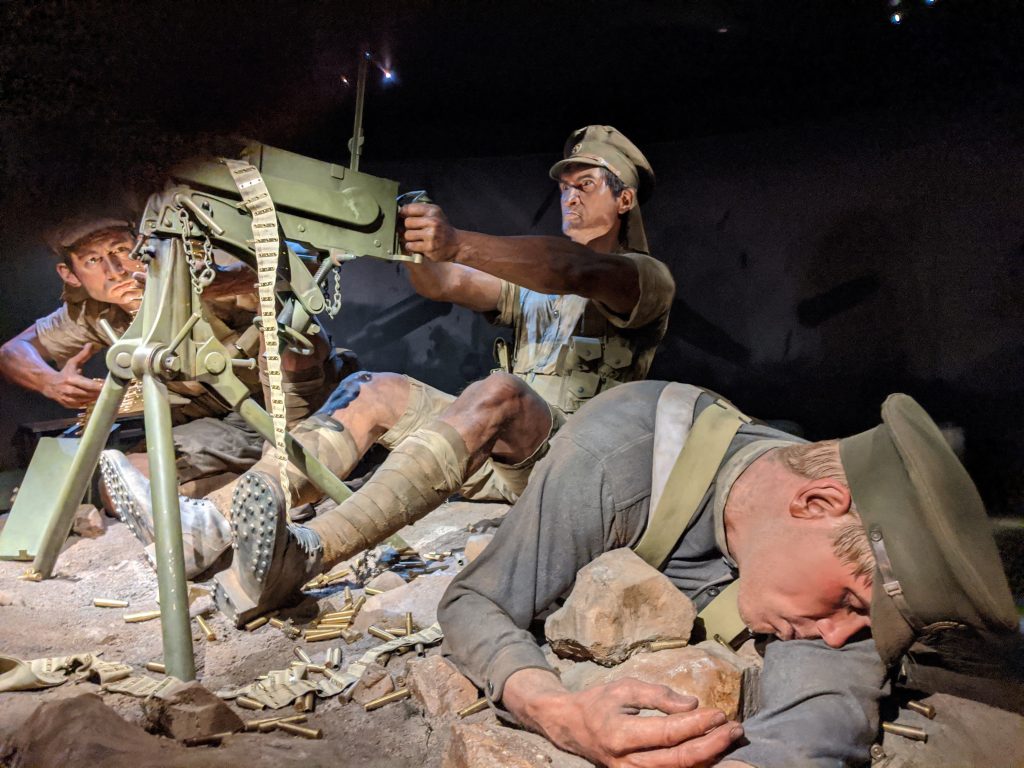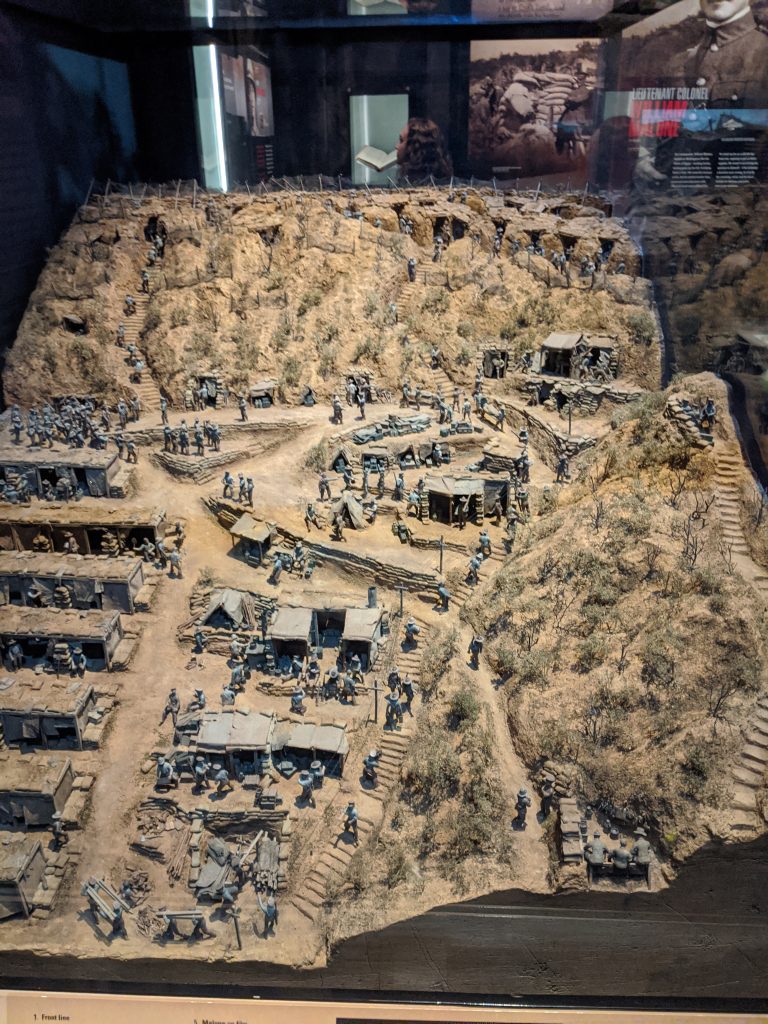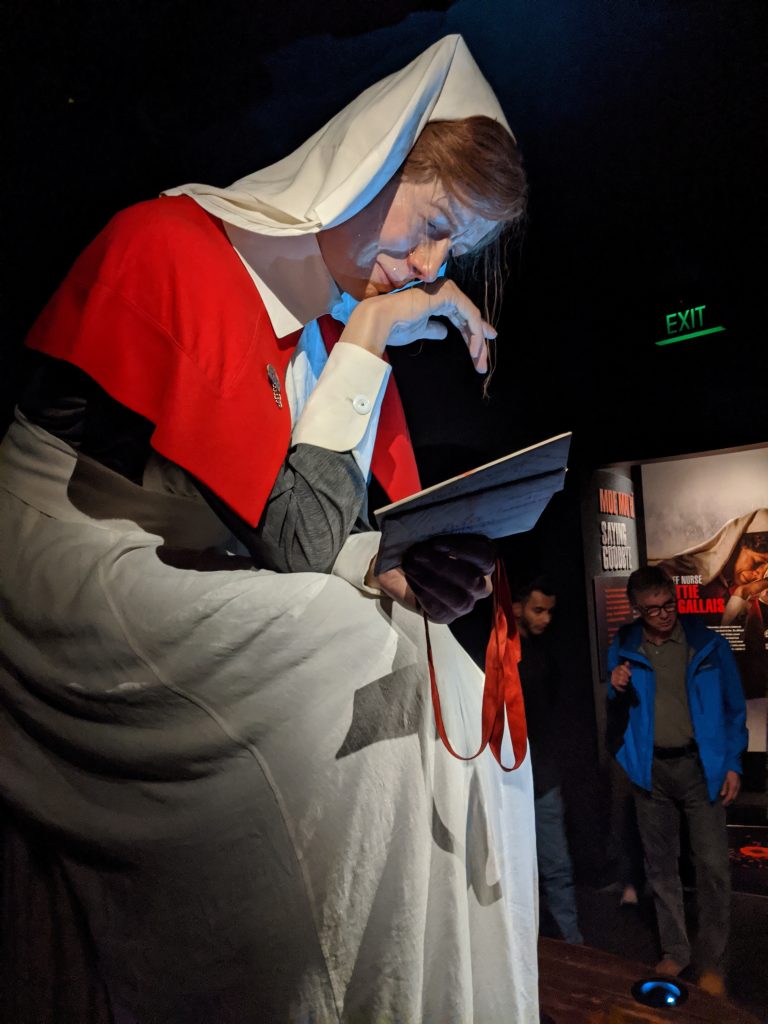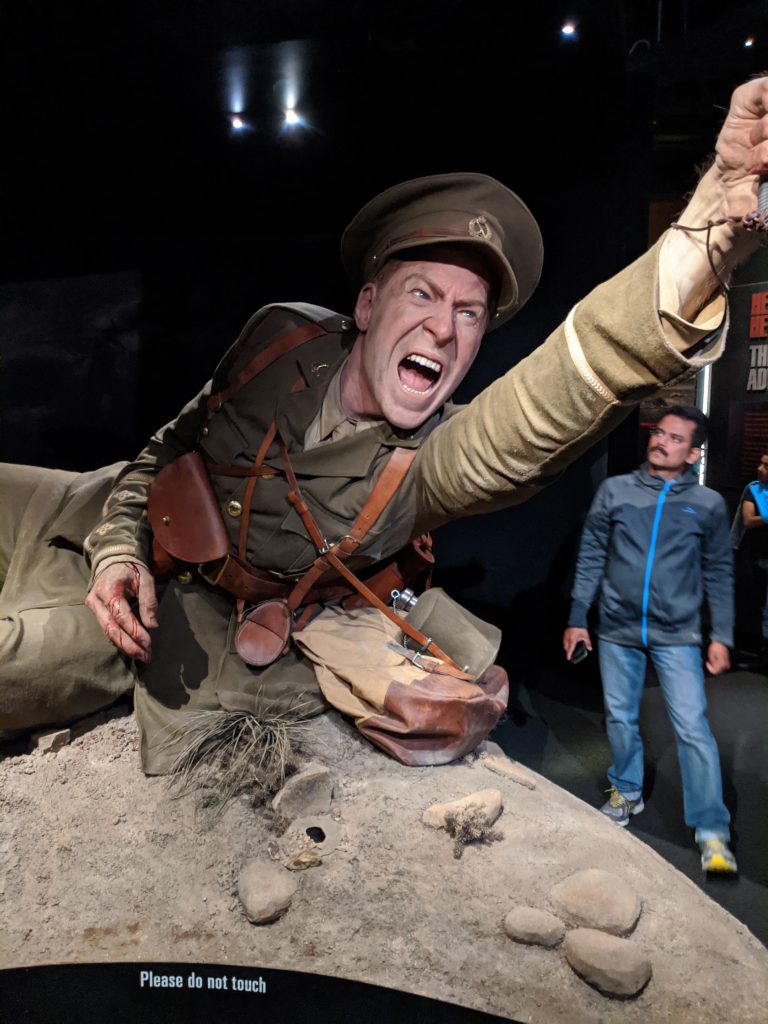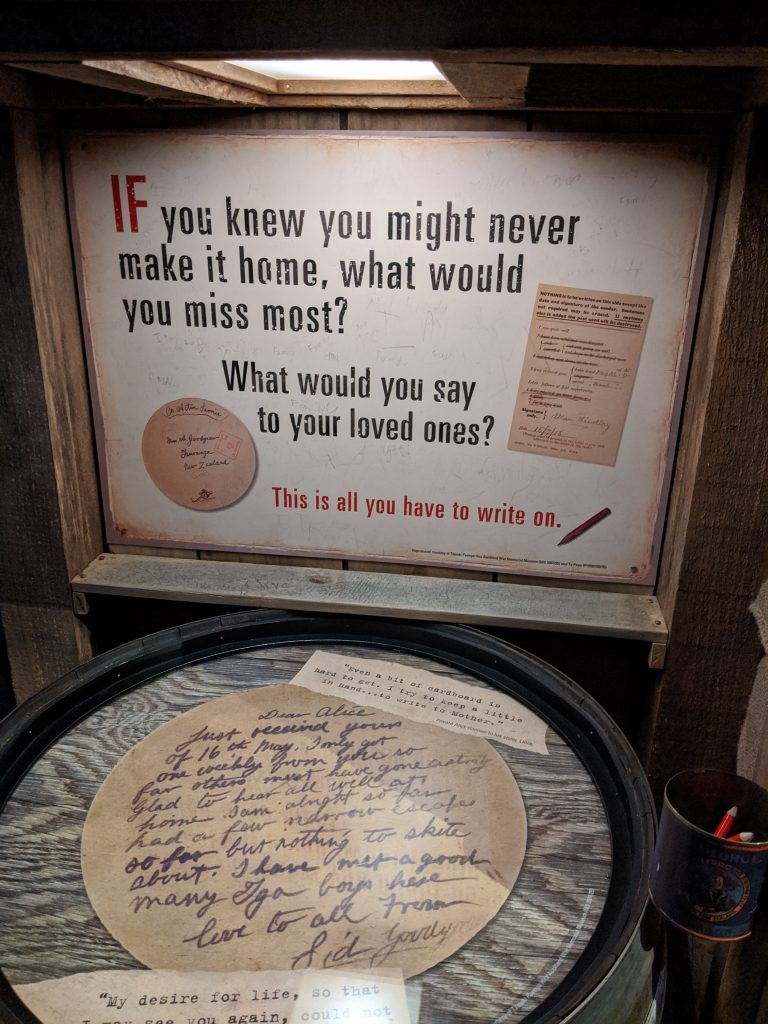Before leaving Wellington, I stopped at New Zealand’s National Museum, Te Papa Tongarewa. Despite its small size, the museum is incredible. Here are my highlights:
Anzac War Memorial
This exhibit, designed by Weta Workshop, features larger-than-life recreations of soldiers and nurses from the Australian and New Zealand Army Corps who served in the Gallipoli campaign, fighting Turkey in World War I. The memorial tells stories of each of these individuals, as well as giving a comprehensive background of the eight-month war which ended with 131,000 casualties on both sides.
One of the most powerful installations in the exhibit features small pieces of paper with the title “If you know you might never make it home, what would you miss most?” During the battle, paper was scarce, so soldiers would save scraps of paper, napkins, and cardboard to write home to their loved ones on, knowing that it would probably be the last thing they ever tell them.
Prior to this battle, Great Britain prevented local tribes from joining the military or aiding in battle. The Maori fought for the chance to fight alongside other Anzac soldiers, but it created a rift in the Maori community. Some tribes wanted to fight to protect their land, while others didn’t want to get involved in a war they weren’t a part of.
The end of the exhibit is perhaps the most depressing. Once winter arrived, public opinion of the battle began to shift in Britain. Anzac forces were quickly and quietly evacuated from the region, leaving behind their dead and lacking any sort of resolution.
Volcano and Earthquake Exhibit
While New Zealand is considered to be a safe country, volcanoes and earthquakes remain an unpredictable part of life here. The volcano exhibit provides the science of these natural occurrences as well as the Maori mythology behind them. Rūaumoko is the Maori god of earthquakes, volcanoes, and seasons. He is thought to be responsible for all of the violent rumblings below the earth.
A section of the exhibit is dedicated as a memorial to the Christchurch victims, where those affected can come and write on the wall to share photos and memories of a pre-quake city. Next to it, there was already a memorial and donation area set up for victims of the White Volcano.
After both of these exhibits and prior to leaving, there is a large sign above the entry that poses the question “Quakes, tsunami, volcanoes…how do you handle the fear?”
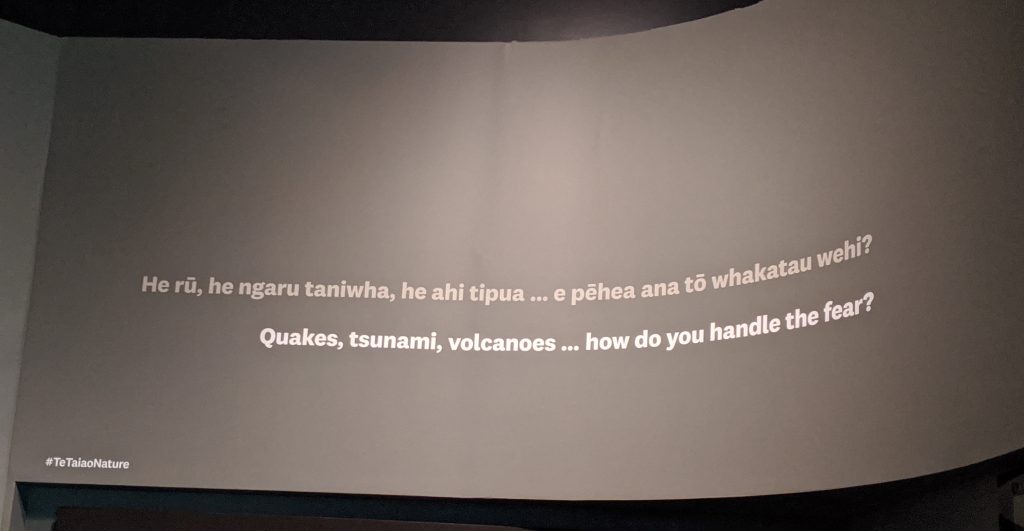
Party Art Installation
On a lighter note, my favorite part of the museum was an art installation by Nike Savvas titled “FINALE: Bouquet”. The installation aims to capture a moment in time, the jubilation that is felt when the confetti is thrown in a celebration that never ends. The effect is absolutely stunning.
I left the museum in high spirits and headed for my next stop: Mordor.
